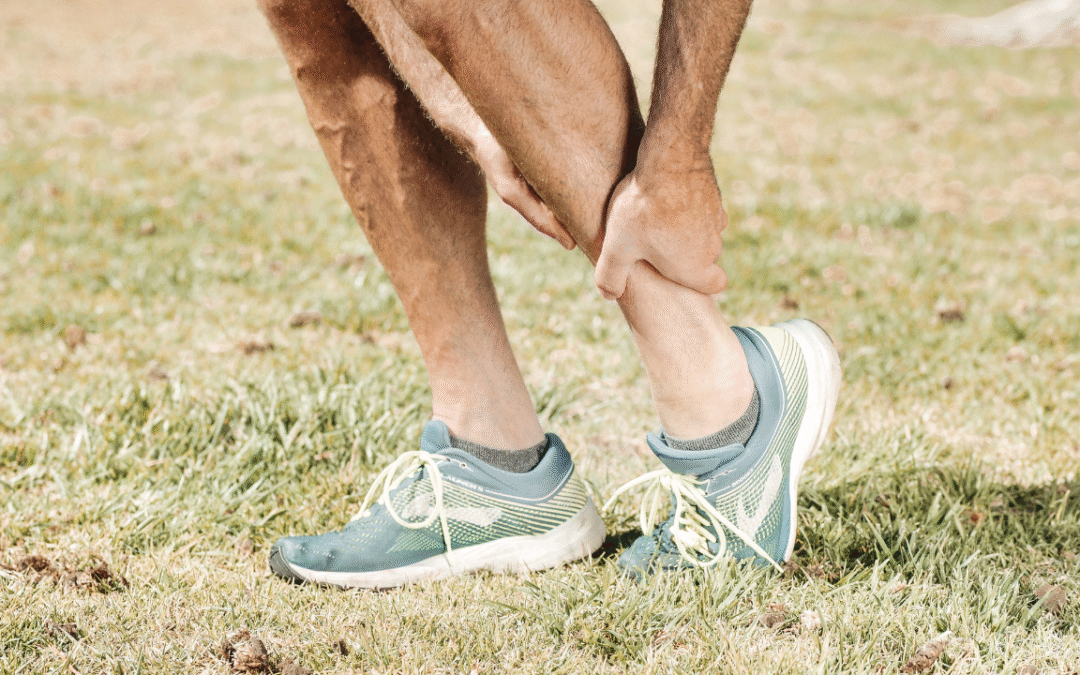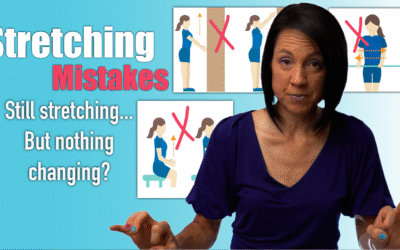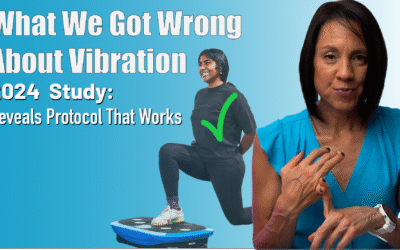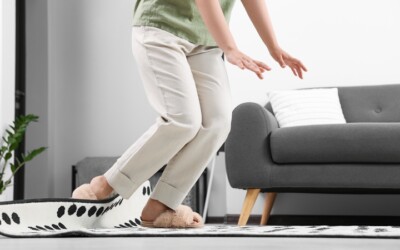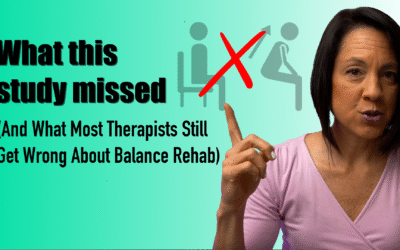Ankle Mobility Exercises to Boost Balance and Walking
Ankle stiffness is one of the most common issues people face after a stroke or any neurologic injury. It can make walking harder, cause your toes to catch, or even affect your balance. But here’s the thing, improving ankle mobility doesn’t have to be complicated.
In this blog, I’ll walk you through why ankle motion matters, what causes stiffness, and easy ways to stretch your ankle safely at home.
What is Ankle Dorsiflexion?
Dorsiflexion is when your foot comes up closer to your shin bone, basically the opposite of pointing your toes. It helps you lift your foot when you walk so you don’t trip or drag your toes. You need about 10 degrees of that upward motion for normal walking.
If your ankle doesn’t move enough, your step can look “flat-footed” or you might have trouble getting your heel to the ground when you walk.
Why Does the Ankle Get Stiff?
There are a few reasons why someone might lose ankle range of motion after a stroke or other neurologic injury. Understanding this helps you figure out which stretches are right for you.
1. Seated Stretch (Great for Most People)
Sit in a sturdy chair and put your foot on a small step or stool in front of you. Bend your knee so it’s directly over your ankle and lean forward gently.
If you can’t lean forward, you can place a small weight (like a sandbag or bag of rice) on top of your leg to add pressure.
Hold that position for about a minute.
2. Wall Stretch
If your foot tends to slide forward, do the same thing but place your toes against a wall. This helps hold your foot in place.
Lean your knee toward the wall until you feel a gentle stretch in the back of your ankle.
3. Standing Stretch
Step one foot forward and keep your back heel down. Bend your front knee and let your body weight gently stretch the back ankle.
Hold for about one minute, then switch sides.
4. Gentle Rocking Stretch
If your ankle bones feel stiff, try this one:
Tie a resistance band (TheraBand) around the front of your ankle and attach it to something sturdy behind you. Gently rock forward and backward.
This helps your ankle joint move more freely.
A Few Helpful Tips
Keep your heel down during stretches.
Hold stretches for 30–60 seconds.
Don’t push into pain. A gentle stretch is enough.
Be consistent! Doing these every day helps the most.
Final Thoughts
Regaining ankle flexibility takes time, patience, and consistency, but every small improvement matters. When you work on stretching your ankle toward dorsiflexion, you’re not just loosening muscles, you’re retraining your body to walk smoother, feel steadier, and move with more confidence.
Remember: it’s not about forcing a stretch or chasing quick results. Focus on gentle, controlled movement and good positioning. If something feels painful, ease up or adjust your setup.
Try adding one or two of these stretches into your daily routine. Over time, you’ll start to notice those little wins, like being able to step more easily, keep your heel down, or feel more balance when walking.
Your brain and body are both learning every time you practice, so stay patient and celebrate every bit of progress.
Want to Go Further?
If you’re ready to take your rehab to the next level, check out our Membership Plans. You’ll get access to 400+ neuro-specific exercises, plus our live Q&A sessions every month where I answer your questions personally.
You’ve got this! Keep moving and keep stretching.
Articles you may be interested in
How Short Bursts of Exercise Boost Brain Healing
HIIT for Stroke Recovery Boost brain rewiring, improve movement, and speed recovery with short bursts of exercise. https://youtu.be/4SgXN2uRX8g If you’ve been on your stroke recovery journey for a while, you’ve probably heard the word neuroplasticity. Neuroplasticity...
Stretching Spastic Muscles: 8 Mistakes to Avoid
8 Common Stretching Mistakes in Stroke Recovery Why Your Stretching Might Be Making Spasticity Worse https://youtu.be/bBsM34HROYY If you’re dealing with spasticity after a neurologic injury, stretching might not be as straightforward as it seems. In fact, doing it the...
New Study: Vibration Plates Boost Balance After Stroke
It Just Vibrates… So Why Are Stroke Survivors Getting Better? The Truth Behind the Research https://youtu.be/GZgGsMjEgJQ When vibration plates first became popular, they reminded many of us of those old 1980s machines that promised to "shake" the fat away. Naturally,...
Walking “Tips” that Sabotage Post-Stroke Progress
Recovering from Stroke? Don’t Let These 7 Walking Mistakes Set You Back Better Walking Starts by Avoiding These Mistakes https://youtu.be/_nkjHLdOeLc Recovering your walking ability after a stroke is an incredible accomplishment. You’ve put in the work. Strengthening...
The Hidden Reason Your Walking Feels Off After Stroke Rehab
The Missing Link in Stroke Rehab: Why Strength Isn’t Enough How Plyometric Exercises Can Improve Your Post-Stroke Walking https://youtu.be/0xzcgTifCiM Recovering from a stroke is a journey that takes patience, effort, and persistence. Maybe you’ve been faithfully...
Struggling with Shoulder Pain After a Stroke? Here’s What Works
Why Does My Shoulder Hurt After a Stroke?Understanding the 6 Most Common Causes and What You Can Actually Do About Them Let’s be real — if you’re recovering from a stroke and your shoulder still hurts, it can feel really defeating. Especially if you’ve been doing “all...
Still Feeling Weak After Stroke? This Might Be Why
Doing the exercises… but still not getting stronger?You’re walking. You’re moving. Maybe even getting stronger.But everything still feels hard. Like walking across a room takes full concentration. Or standing up while talking feels like solving rocket science....
Stroke Recovery: Spasticity vs. Adaptive Shortening vs. Contracture
Stroke Recovery: Spasticity vs. Adaptive Shortening vs. Contracture Muscle tightness after stroke is common and can be the greatest barrier to restoring normal arm and leg movement. But not all tightness is the same. To treat it effectively, you need to understand...
Why Eccentric Control Might Be the Missing Link in Your Stroke Recovery
Why Eccentric Control Might Be the Missing Link in Your Stroke Recovery After a stroke, movement rarely returns the way we’d like. Instead of smooth, controlled motion, you get stiffness... or those annoying synergy patterns—where every muscle seems to fire at once....
Why Plyometrics Matter After Stroke (Even if They Sound Scary)
Why Plyometrics Matter After Stroke (Even if They Sound Scary) Let’s start with the obvious: The word "plyometrics" sounds like something reserved for athletes, not stroke survivors.But stay with me—because if you’re in the later stages of recovery, this could be the...

